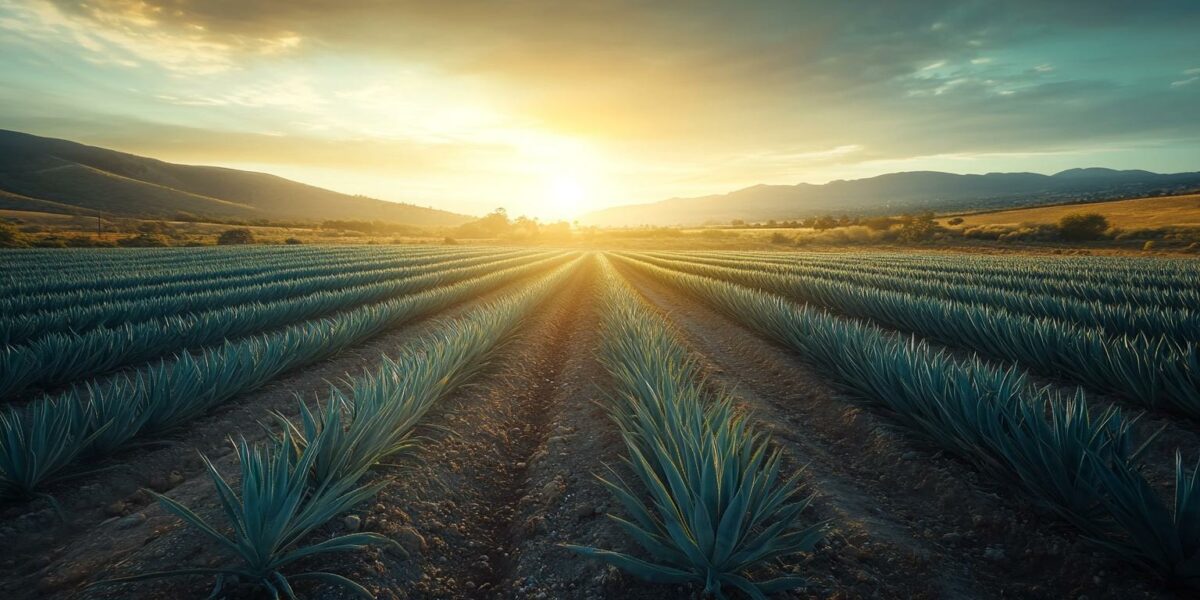California’s Agricultural Shift: From Almonds to Agave
In light of severe droughts and rising temperatures, California farmers are transitioning from water-intensive crops like almonds to more resilient options such as agave. This shift is largely driven by the need to adapt to climate change and ensure the sustainability of agricultural practices in the state.
Agave, traditionally grown in Mexico for tequila and mezcal, is now being cultivated in California. Its low water requirements make it an attractive alternative for farmers. This trend is gaining traction, with increasing numbers of farmers exploring the potential of this hardy plant.
Juan Rodriguez, a roofer by day, is one of many who have started growing agave. He, along with his family, works evenings and weekends to cultivate a 2-acre agave field. Rodriguez’s experience highlights the growing interest and investment in this crop.
California’s climate, characterized by extreme heat and drought, is well-suited for agave cultivation. The plant’s ability to thrive under such conditions makes it a promising candidate for the state’s agricultural future.
Adapting to California’s Unique Climate
Growing agave in California presents unique challenges. Farmers like Flores are learning to adapt their cultivation practices to the state’s diverse climate and soil conditions. This process involves understanding the different growth cycles and requirements specific to California.
Despite these challenges, agave’s robustness makes it a viable option. The plant requires significantly less water compared to traditional crops like almonds, which need around 48 inches per acre annually. In contrast, agave needs only about 3 inches, making it an efficient alternative.
Efforts to support agave cultivation include the formation of the California Agave Council in 2022. This nonprofit organization assists growers by providing resources and fostering a community of agave enthusiasts.
Key benefits of agave cultivation include:
- Water efficiency: Requires significantly less water than traditional crops.
- Climate resilience: Thrives in extreme heat and drought conditions.
- Economic potential: Opens new market opportunities for agave-based products.
The Craft of Agave Cultivation
Raul Chavez, a seasoned agave grower, shares his expertise with new farmers like Rodriguez. Chavez’s passion for agave stems from his upbringing in Jalisco, Mexico, where the plant is a staple. His knowledge is invaluable in helping others navigate the complexities of agave farming.
Chavez explains that growing agave requires patience and dedication. It takes around seven years for the plants to mature. Once ready, the thick leaves are removed, leaving the core, or piña, which is then processed to make agave spirits.
Harvesting agave is labor-intensive and demands skilled workers. Many of these workers, like Chavez, have roots in Mexico, where the tradition of agave farming is deeply ingrained.
To ensure the agave industry thrives in California, there is a need to develop mechanized harvesting methods. This innovation will be crucial as the number of agave growers continues to rise.
California Agave Spirits: A Growing Market
The growing interest in agave cultivation is matched by a rising demand for California agave spirits. Farmers like Rodriguez aspire to make agave farming their full-time occupation, driven by the potential of this burgeoning market.
California law now recognizes “agave spirits” as a unique product, distinct from tequila and mezcal, which are tied to specific regions in Mexico. This legal recognition is a significant step for the industry.
Distillers like Sean Venus are already producing agave spirits using both locally grown and imported agave. As more California-grown agave becomes available, the industry is expected to expand significantly.
Efforts to source agave have led to innovative approaches, such as harvesting wild agave plants. This grassroots movement is fueled by a passion for agave and a vision for its future in California’s agricultural landscape.
Community and Collaboration in Agave Cultivation
At Chavez’s farm, the process of steaming agave piñas is a communal event, accompanied by music and camaraderie. This sense of community is vital for the growth of the agave industry in California.
Growers and distillers work together, sharing knowledge and resources. This collaborative approach helps new farmers, like Abraham Granados, navigate the challenges of agave cultivation and realize their dreams.
Granados, inspired by his childhood fascination with agave, has recently started growing the plant. He is also planning to launch his own distillery, demonstrating the long-term commitment required for success in this field.
The resilience and adaptability of agave have made it a symbol of hope for California’s farmers. As the industry continues to grow, it holds promise for a more sustainable and climate-resilient agricultural future.



Charlie
How do the local farmers feel about this shift? Any interviews with them would be great!
Gizmo4
Agave needs only 3 inches of water? That’s amazing! Why didn’t we do this sooner?
LincolnKinetic
This is fascinating. Can agave be grown in other states facing similar climate issues?
roseillusion
Interesting read, but I wonder if agave farming will be as profitable as almonds in the long run.
henry
From tequila to California agave spirits, this is going to change the game! Cheers to innovation! 🍹
Cleo
Great article, but what about the impact on local wildlife? Any studies on that?
KaylaInfinity7
Agave spirits? Count me in! When can we expect to see more local agave products on the market?
genesis
Switching from almonds to agave is a smart move. Thanks for sharing this insightful piece. 🌵
sophia
Wow, agave in California! Didn’t see that coming. How long does it take to grow a full agave plant?